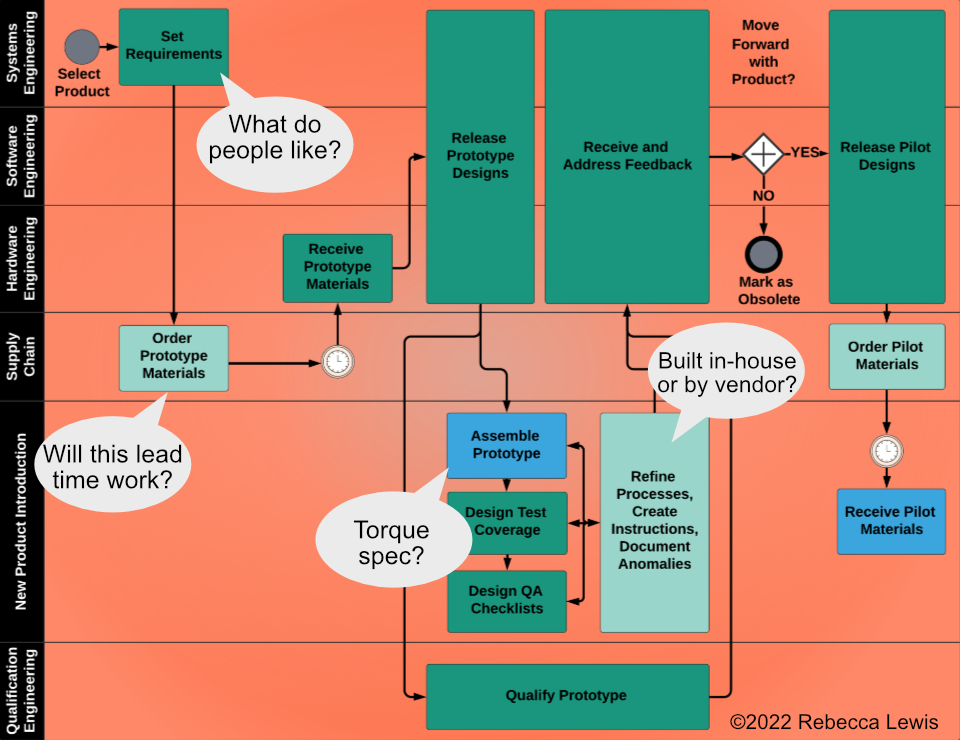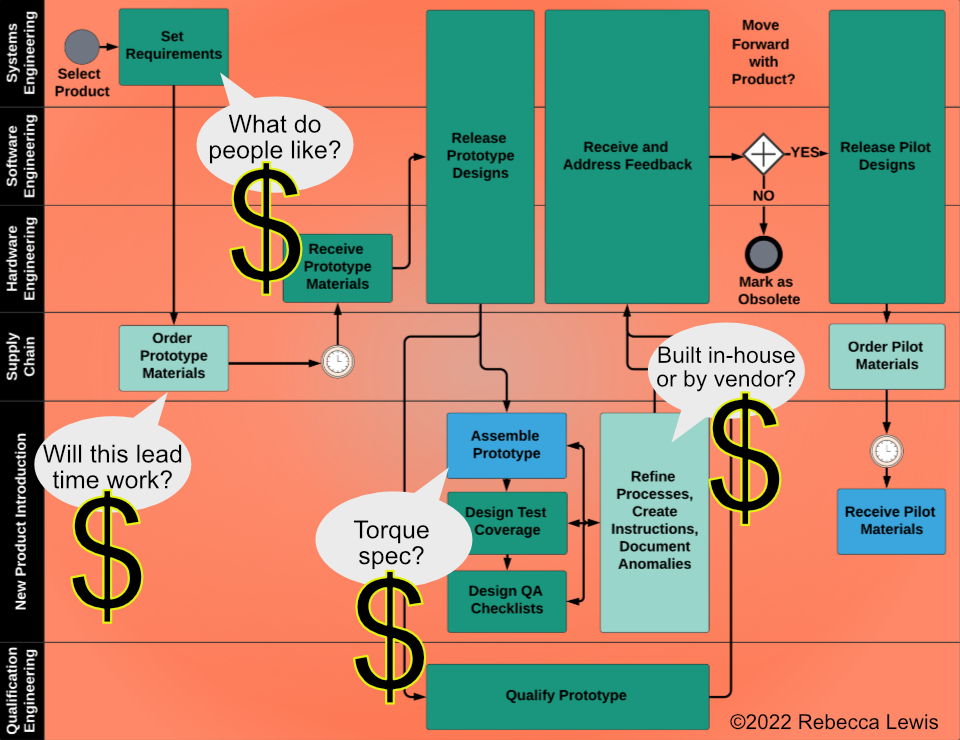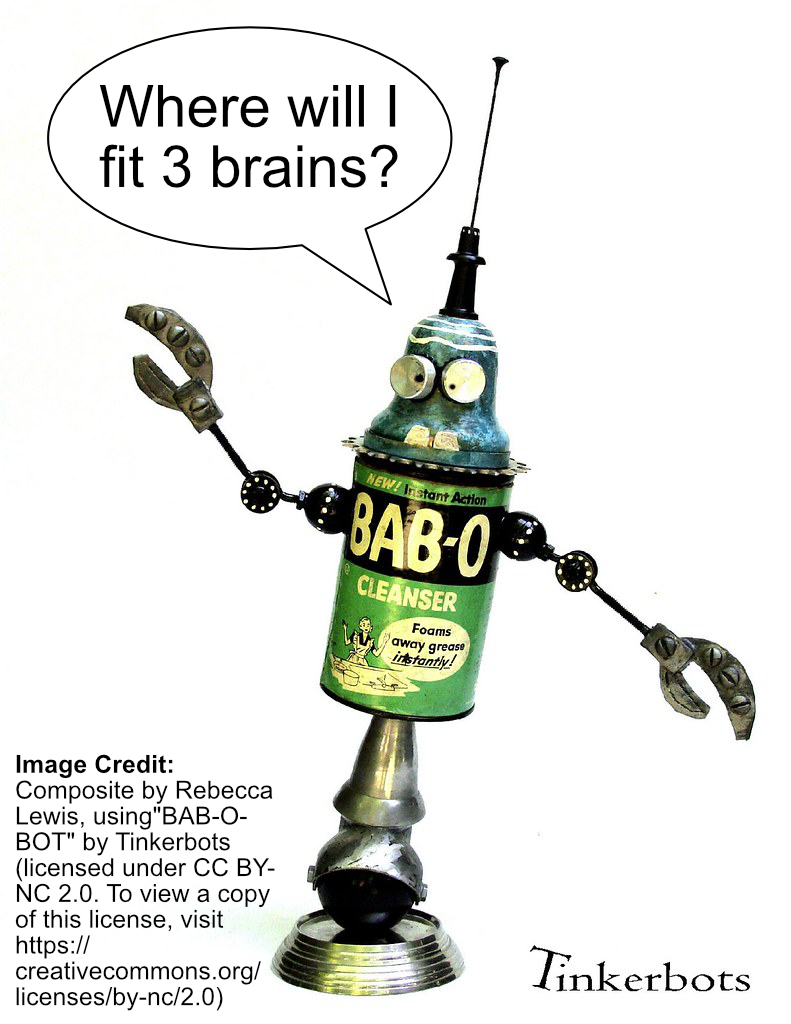Rebecca Lewis
Portfolio Menu
Analysis of Information Access
Information has to mix with other information--within the same group or within the same mind--in order to connect the dots and enable the logical connections that make it actionable.
INTRODUCTION
Within a process flow, information, by itself, is value-agnostic.
Its value is created when a person who needs to use it has it at the right time and at the right location in the process.
- This allows them to use it to keep the process flow moving as efficiently as possible.
- This also makes that information pivotal, no matter the nature of its other value factors.
-Resized to 1200x925.png)
UNIQUE FLOWS
There is a different value factor "personality" for each process flow.
For example, visualize the following within a Build Lab:
 Merely Interesting:
Merely Interesting:
- Exhaustive list of vegetables
Pivotal and Needed for Flow:
- Pilot Bill of Materials (BOM)
VALUE FACTORS
Multiple value factors include but are not limited to:
- Cost to originally obtain the information
- Task(s) enabled by it
- "Exchange cost" for passing it between agents in the process
- Value or leverage of the particular process agents who have it or need it
- Size and impact of the bottleneck created by its absence...
...WHICH IS TODAY'S DISCUSSION
Analysis and problem-solving for bottlenecks caused by...
- the right information...
- not being held by the right process agent...
- at the right time.

IN A NUTSHELL
- What information, if absent, creates a bottleneck?
- What process agent needs that information?
- What agent has that information?
- What's the most efficient way to make the exchange before the agent needs it?
GOOD NEWS
Information bottlenecks can come in different sizes and impacts, but they are all bottlenecks.
- KEY POINT: They aren't exactly hidden. They're someone's pain points.
Thankfully, that's our team personality!

MORE GOOD NEWS
Each bottleneck is a clearly identified opportunity to make an incremental improvement... without having to brainstorm further about "how to improve things."This transforms "information bottleneck hunting" into a practical method of TREASURE HUNTING!
FACTOR WEIGHTING
In rockets, redundancy is one strategy used to manage risk. The stakes are different with robots.
 Imagine if a robot had 3 computers, for just in case
Imagine if a robot had 3 computers, for just in case- Various risks and solutions are given different weights in the two situations
STRATEGIES
Information Risk Management Strategies (not exhaustive, in no order):
- Centralized Access
- Standardization
- Automation
- Process Improvement
- Translation Between Paradigms
- Illustration of Ambiguous Information
ASIDE: MY OWN THEORY
Dispassionate, objective strategizing about eliminating or preventing information bottlenecks doesn't do very much good in a toxic culture.
- Sometimes, such strategizing is even punished.
- It seems pretty silly to me that lack of valuing each other's contributions is a really easy way to miss out on innovation.
ANOTHER OF MY THEORIES
The more I learn about objectively facilitating the flow of information within a process flow, the more I suspect the below.
(I'm constantly looking for ways to test it out.)
- The same dynamics that make it so that it is in our own interest as a company to value contributions, no matter how they are "packaged" within a social context...
- Also make it in our own interest to behave similarly as social groups within larger social groups...
- And also make it in our own interest to behave similarly as individuals within social groups and within individual relationships.
BACK TO ROBOTS
Some information in our own flows is easily accessible to anyone, like our PLM database.
- However, even better would be a dashboard or tool that queries the specific PLM information needed, at the right time or frequency
- Therefore, we all hold and obtain some information that others do not have... it is solely-held.
HYPOTHETICAL
If I am not an engineer, and if I regularly need a piece of solely-held, pivotal information that requires research, expertise, and engineering judgment--which I do not possess--what are my options?
My Own Options
- Do my own manual research and approximate what an engineer might tell me about it if I were to ask them.

is licensed under CC BY-SA 4.0 - Take up a lot of an engineer's time by not doing my homework and by not giving them context and details before I ask them questions.

is licensed under CC BY-SA 4.0 - Email all necessary details so an engineer can evaluate them and give me an answer--at the least cost to their own part of the flow.

is licensed under CC BY 2.0 - Set up a "low-cost" way, within their own part of the flow, to routinely leave that information for me somewhere, before I need it.

is licensed under CC BY-SA 2.0
My Own Conclusions
Do you see how easily we could miss out on innovation because of social factors?
- If I were to refrain from asking for information because I felt timid, or even if I were to not value someone else's time when I ask for it, the flow would be slowed, at the very least
THOUGHT EXERCISES
What pivotal, solely-held information am I missing? Who holds it?
Who needs to use my own pivotal, solely-held information?
- How would we know about each other's needs and resources?
- How could we exchange the information?
- Would that exchange be inefficient enough to bottleneck the flow of information?
- How much of our time would be taken away from our main roles in the process flow?
- Would it be worth it?
CONTINUOUS IMPROVEMENT
The above thought exercises let you identify something specific and practical that you can do NOW to incrementally grease the information wheels within the flow.
Options
- You perform thought exercises when you find your own work blocked; OR
- You strategize about the whole system and plan for it ahead of time
MY OWN QUALIFIERS
- KEY POINT: Just because I know how to make practical plans for the future doesn't mean that I should completely sacrifice the present for them.
- Stay connected and engaged with the present.
- Evaluate whether I'm doing anything now that will limit my options in the future.
- Evaluate whether any current potential actions exist that would positively synergize my options in the future.
CALCULATIONS
Example:
"How do we efficiently translate the R&D BOM from R&D engineering's logical context into our own logical context, so we can build it?"
What are our options for untangling this messy problem?
- Do we only have manual options?
- Is there any portion that could be automated?
- How will we compare our options?
 "Eleanor - and string" by ndrwfgg is licensed under CC BY 2.0
"Eleanor - and string" by ndrwfgg is licensed under CC BY 2.0
Insights:
We need some kind of translator between the two logical contexts.
- Technical Writer?
- Technical Project Manager?